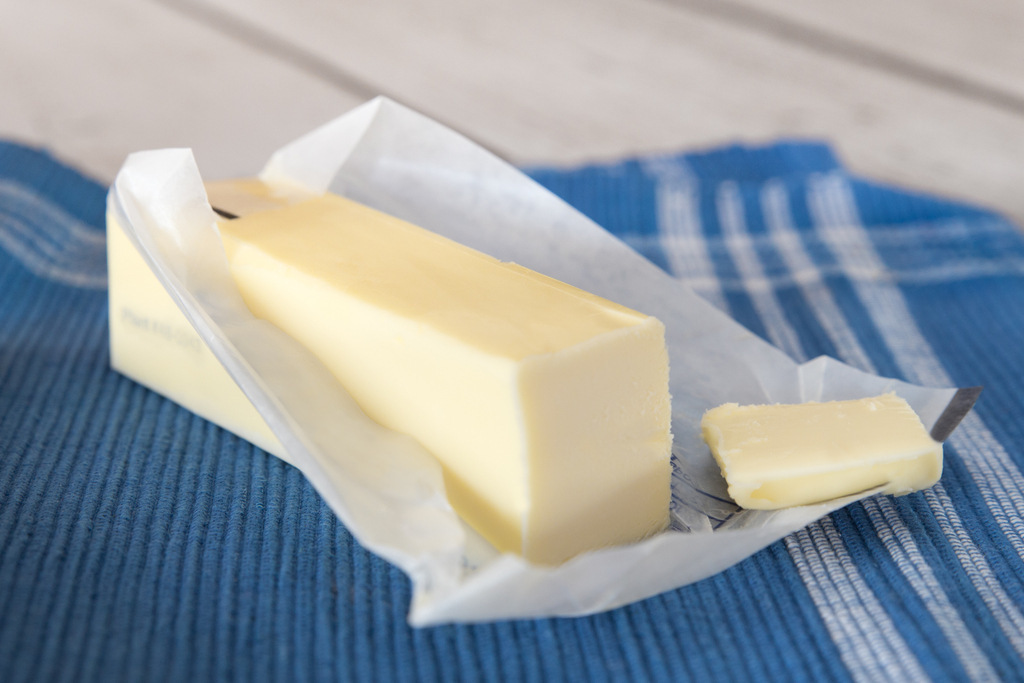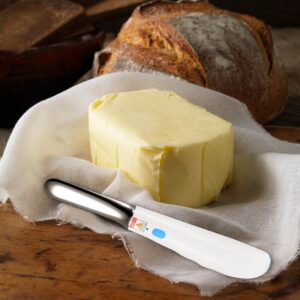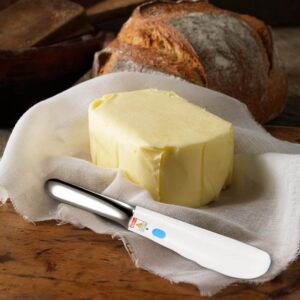Why Cultured Butter and All about Artisan Cultured Butter Jakarta

Before looking for an information about buying artisan cultured butter Jakarta in your city, here is a brief explanation of the butter. You’d think a book on butter would be filled with recipes, but Elaine Khosrova’s Butter: A Rich History is not. This book is full of ritual, history, politics and science. There are even some recipes that Elaine wrote about food. She is also the former editor of Culture, a magazine about cheese. She has traveled the world researching books on her butter. One of the contributors interviewed Elaine and here is a fragment of her response.
Clark: One of the surprises for us reading your book was learning about the relationship between butter and religion. Can you tell us about it?
Elaine: The subject was also interesting and surprising to me. I did not expect to find that ancient cultures around the world used butter as a sacred tool for their spiritual practice. It goes back to Sumer 2500 BC, and the Aryan Vedas, Druids, Hindus, Buddhists. All of these cultures use butter in their worship practices. Most of these rituals no longer exist, but Tibetan Buddhists still perform the intricate butter carvings called tormas that are at the core of their spiritual practice.
Clark: What do you think gives that kind of aura that makes it seem religious or spiritual?
Elaine: For most of the history of butter, the process of making butter was mysterious. It’s a puzzle. How can you drink milk, and through the process of just shaking or shaking it, these invisible fats that are in the milk suddenly bloom into beautiful purchased pieces? Until the late 1800’s, butter was little understood but highly valued. It is considered like pearls and oysters, or rainbows, some of the beautiful mysteries of this world. That is why the butterroot has become so useful in a sacred way, for what it represents.
Clark: The magical one?
Elaine: Magic, to be exact.
Clark: Historically, women have always played a large part in butter making. Would you like to talk a little bit about that?
Elaine: It wouldn’t be an exaggeration to say that women founded the patterning industry, because it was taboo for men to have anything to do with the dairy arts for most of history, or because we’ve been milking the animals. I find this all over the world, taboos against men milking, buttering, cheesemaking, persisted into the 1800s. Milk is all about birth, lactation and fertility. It’s kind of a feminine domain and because they have a monopoly on the manufacture of butter, they derive a certain status from it, because butter is precious.
Clark: You have to see some of this stuff firsthand. We know you are traveling to India and you have to look into buying traditional butter?
Elaine: I went specifically to see the butter made from buffalo milk. That would be traditional milk in India, and it was for centuries. It is an animal best suited to the climate in India, and buffalo butter is their traditional butter. It doesn’t disappear. Butter from cow has become more common, but buffalo butter is such a farm product that I was really interested to see how they made it.
I could go to a small village in northern India, in Punjab, and meet two old women. They showed me how they took buffalo milk and cultured it overnight. They make a very tasty and rich yogurt called as dada and put it in the churn. A generation ago, it would have been a beautiful churn metal.
On the particular day I visited, they put it in a plastic bucket. But they still use a unique churning system, which involves a pole, a center post that has a cross-piece at the bottom, that goes into the milk. They take turns pulling the ends of the rope. Imagine the center pole being turned by the women pulling the strings on either side, back and forth. Such a stirring system does not exist anywhere else in the world.
I want to document it. Even in this remote village, women tell me they now use blenders to make their butter. I’m happy to document and view it. In a generation, it might cease to exist.
Butter: A Rich History and Artisan Cultured Butter Jakarta
Clark: You mentioned that it is artisan cultured butter Jakarta. We know that we can buy cultured products in supermarkets. We could also buy lots of different butters; European high-fat butter, sheep butter, goat butter. Can you walk us through the differences?
Elaine: We’ll start with the simplest one first which is sweet butter cream. It’s butter only the cream put in the churning until the butter happens, and if it’s industrial churning, it happens in three seconds. It’s just cream made into butter. If you have artisan cultured butter Jakarta, it means the cream has been mixed with either infused lactic bacteria or derived from natural bacteria from the milk and allowed to ferment for at least 12 hours, usually longer.
The point is to develop the complexity of the flavors in the cream. Butter has 120 different flavor compounds, and by culturing it you can intensify some excellent compounds like diacetyl, the compound that gives us the classic buttery taste. Identical culture with slight acidity. If you can balance the sweet, sour and buttery flavors it is world class butter.
Then there’s European style butter. That means butter is high fat, higher fat because the standard in the United States is 80 percent fat in a stick of butter. European-style high-fat butter can be 82-86 percent fat, which may not sound like much of a difference, but when you’re a baker it makes a lot of difference.
Clark: Would you say to bake with European-style butter and if you’re going to butter your bread and eat it, use refined butter for extra flavor?
Elaine: That’s what I like. As far as baking, higher fat butters are excellent for pastries. If I’m baking, I don’t feel the extra butterfat makes much of a difference. The only exception is pound cake where I want that super rich density.
Three Important Points and Artisan Cultured Butter Jakarta
Clark: Tell us about how butter gets its different flavors? You wrote in your book that the taste of butter comes from three different things; types and species of animals, pet food, and human art.
Elaine: Three very dynamic things influence butter’s character; types and species of animals, pet food, and human art. The plant aspect, in particular, has a big influence on butter. Animals can be fed grain or grass, and there’s quite a variety of butter you get from them. Not only taste but also nutrition. Grass-fed butter definitely has more micronutrients in it than butter that comes from grain-fed cows.
Clark: And it changes seasonally?
Elaine: Certainly in places where it’s winter. But even then they have plenty of silage and hay. They have fermented grass besides a bit of grain. They have an excellent system for keeping cows on grass all year round. I tell people that butter is a staple in the diet and if you are going to eat a small amount each day for your toast or potatoes I think it is totally worth it to seek out good grass fed butter.
Thus a complete explanation of butter, sweet cream, cultured butter and European style butter. Now that you understand the difference, you can look for information where you can buy artisan cultured butter Jakarta such as De Grunteman cultured butter with exceptional quality.






